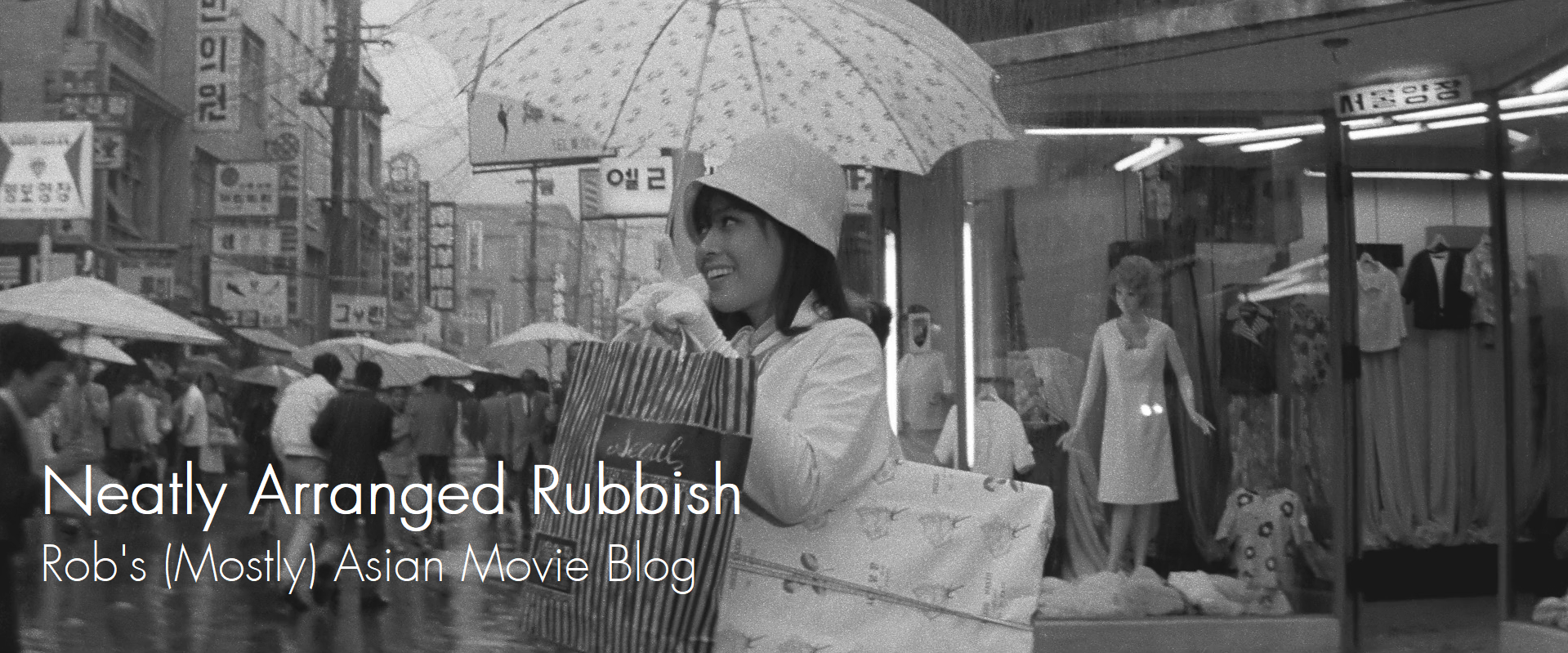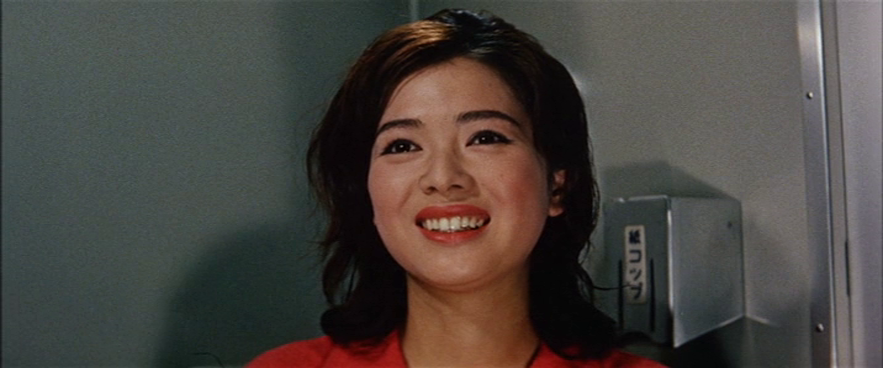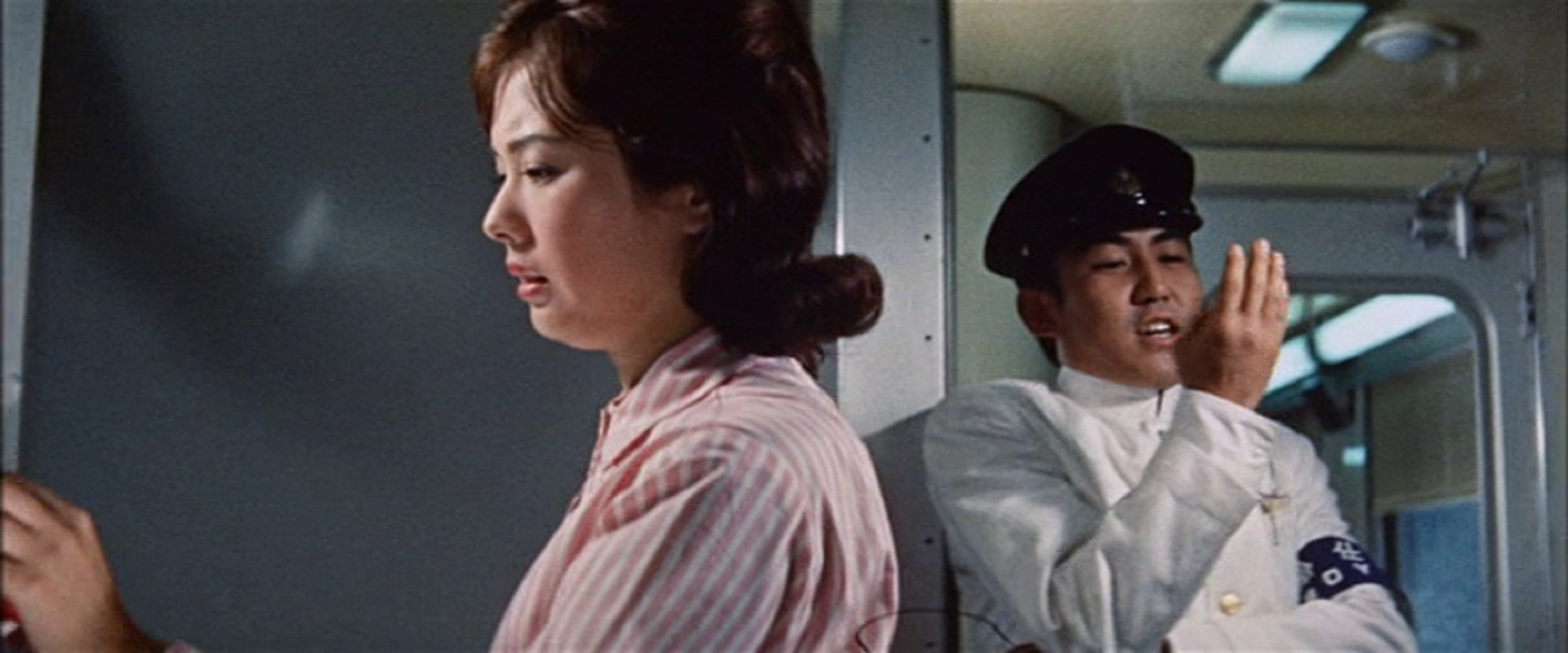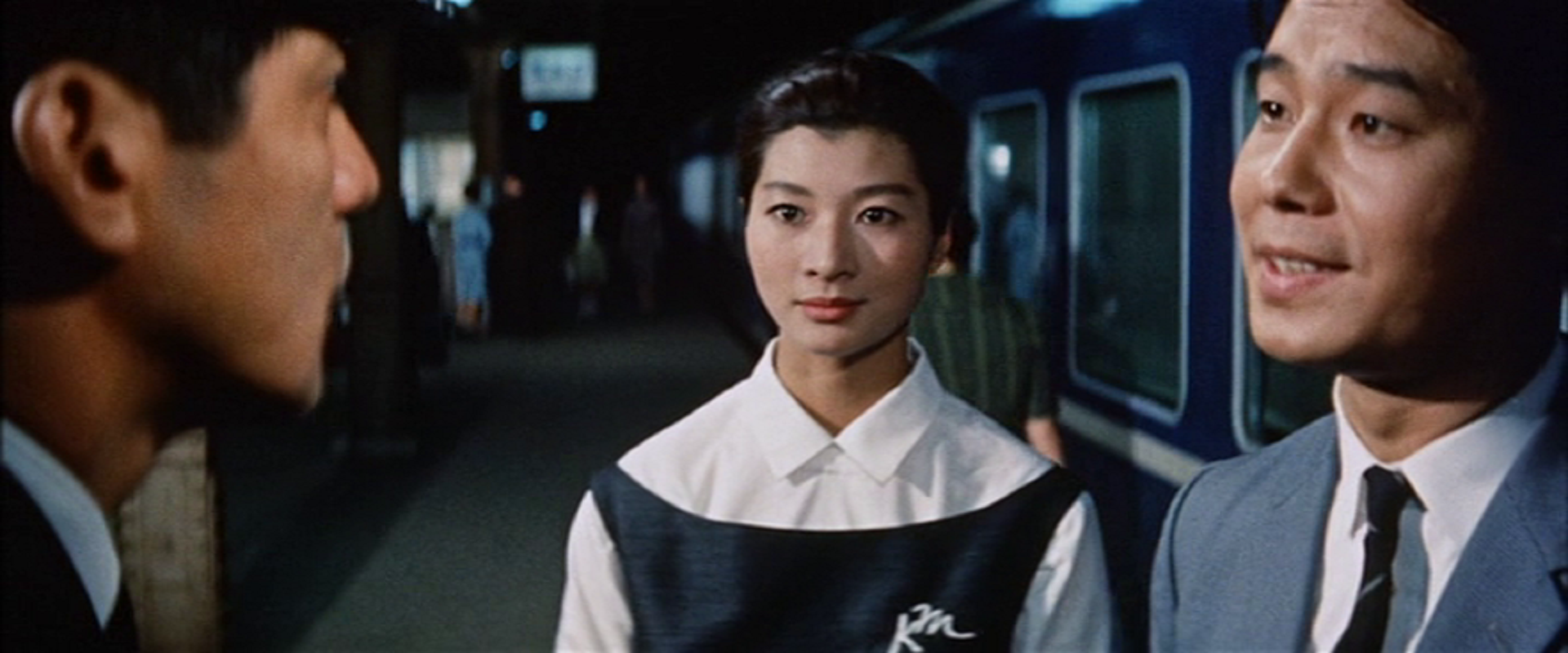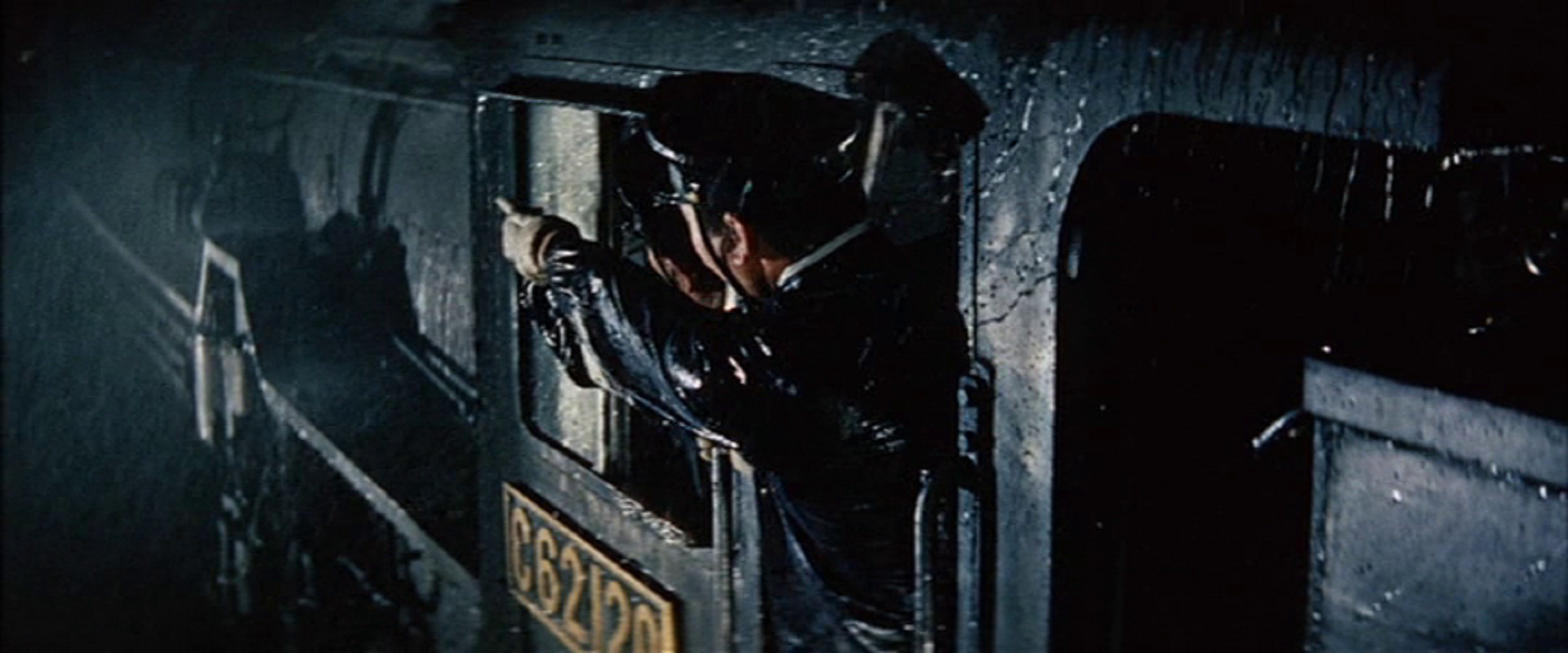Last Updated on October 17, 2020 by rob
After four years of work youthful train attendant Yajima (Katsuo Nakamura) sees no value in his job and wants to quit so he can marry girlfriend Kimie (Yoshiko Sakuma). She, however, thinks that job security is more important than a hasty marriage. So Kimie boards the Sakura – the Nagasaki bound express Yajima’s been assigned to – in order to convince him to stay. But even as the two lovers argue, the personal problems of other passengers loom large and the tracks are hit by a landslide which strands the Sakura at the centre of a typhoon. It’s a race against time to clear the tracks and get the train moving again. But with his own relationship in question does Yajima have what it takes to be a team player?
Devotion to Railway is a real charmer. On one level it’s an affectionate portrait of the railway employees who do all the heavy lifting keeping the train running and the passengers happy. It’s so successful in this that by the end you almost want to go out and enrol as a trainee conductor yourself. But on the other it’s also like an entry in the disaster movie genre with a bunch of strangers thrown together each with their own little storyline and events coming to a climax when the storm hits, an avalanche halts the train and Yajima is forced to make a life-changing decision with consequences for all involved. Kaneto Shindo wrote the screenplay and it’s very much in line with the socially conscious movies he was making in the 1950’s. If you only know his work from macabre 60’s films like Kuroneko and Onibaba this might seem amusingly square in comparison but it really isn’t.
In fact something in the imagery of the storm sequence, in which crew and passengers pile out in the pounding rain to claw the rocks and boulders away with their bare hands, evokes an elemental struggle for survival entirely in line with his better known movies. The film smoothly juggles Yajima and Kimie’s dilemma with multiple sub-plots – that of a passenger stalked by an assassin, a young man eloping with an older woman, a pampered fat cat politician who kicks up a fuss because his gold watch has been stolen, a pretty young lady escorting vital blood supplies (which, in that cliché-of-clichés, must arrive on time or else!) and plenty more besides – all of which are engagingly put over and satisfactorily resolved. I especially liked the happy honeymoon couple travelling on the train whose wedded bliss is used as a kind of remainder to Yajima of what he stands to gain – or lose – depending on his actions.
And I loved the scene in which Yajima’s character is put to the test. It comes when the avalanche has hit, the train’s stuck, there’s torrential rain crashing down, Kimie’s looking anxiously on, all these passengers are coming up to Yajima with heart-tugging entreaties and poor Yajima’s in a paralysis of indecision. You really wonder if his desire to quit means he’s going to turn his back on them. But then he leaps out the door to help and his action actually encourages the rest of the staff and not a few of the passengers, Kimie included, to join him. The spectacle of everyone pulling together proves so rousing it even persuades one traveller with suicide on his mind to stay alive! Without being overly sentimental or heavy-handed the movie says something meaningful about the value of being part of something larger than your own selfish desires and the way ones actions can have a positive effect on others. Even the train’s pickpocket ends up returning the gold watch he’s swiped but the film’s humanist theme is put across so well we don’t see even this development as unlikely.
Katsuo Nakamura gives a pleasant enough performance as Yajima but I really liked the beautiful Yoshiko Sakuma who plays it sweet and sincere as Kimie. This woman lights up the screen with a plaintiff, soulful quality. It’s a touching moment when she admits that her stubbornness regarding Yajima’s job is driven by her own impoverished childhood and an uplifting one when Yajima’s senior, Matsuzaki (Rentaro Mikuni) – the kind of firm yet affable boss we’d all like to have – tells her to stop worrying and just jump into marriage. I got a kick out of seeing these two together again since I’d just rewatched A Story from Echigo, made a few years later, in which Mikumi plays a nasty piece of work who ends up raping Sakuma’s character but they’re all good friends in this one. The passengers are a lively bunch too, especially the fat cat politician and all his fawning acolytes who greet him at each stop with chants of “Banzai!” He gets a well deserved comeuppance at the end when a fellow passenger flat out refuses to be awed by his presence.
The production values are also exceptionally good. For starters much of the movie looks like it was shot on an actual train. Most of the backgrounds visible through the carriage windows are clearly not rear projection screens but the real deal. The sleeping compartments, passenger and dining carriages are barely wide enough for a single person to walk down yet the camera is frequently dollying away from or toward the actors with an agility that belies what must have been extremely cramped conditions for cast and crew. Cinematographer Hanjiro Nakazawa’s framing and compositions are fascinating. As if reflecting the compact spaces there are times here where his low camera angles mean he’s got heads and bodies all over the frame but the effect never seems less than wholly pleasing.
The emphasis on low camera angles and moody lighting effects gives the movie a distinctly noir-ish atmosphere that really comes into its own once night falls and a would be killer stalks his victim as the storm hits. Speaking of which, the big storm sequence is very well staged on what likes a real location with the actors getting absolutely drenched in the rain. It’s a great looking film (some of the train POV shots of the surrounding landscape as it makes its journey from Tokyo to Nagasaki are gorgeous) and kind of amazing that it’s almost completely unheard of. Granted, maybe this is just a standard studio film at a time when Japanese cinema was churning out hundreds of such films a year, but if so it speaks to the high standard of even the less high profile ones.
